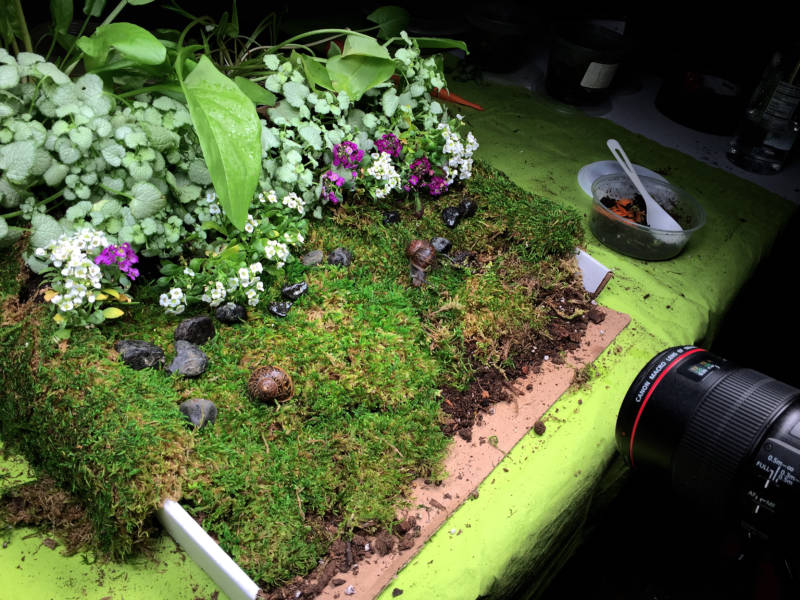Everything You Never Wanted to Know About Snail Sex
The recent heavy rains in California have been good for the drought. But it’s not just people who are celebrating.
Brown garden snails, which originated in the Mediterranean where the climate resembles much of California’s, thrive in moist places. If it’s too cold or too dry, they hunker down in their shells and wait for a wet spell.
After the rain, when everything’s nice and damp, like it is now, snails re-emerge. That’s when love is in the air. But the sex life of these common snails is anything but ordinary.
First, they’re hermaphrodites, fitted with both male and female reproductive plumbing, and can mate with any member of their species they want.
Sounds easy, but the battle of the sexes is alive and well in gastropods.
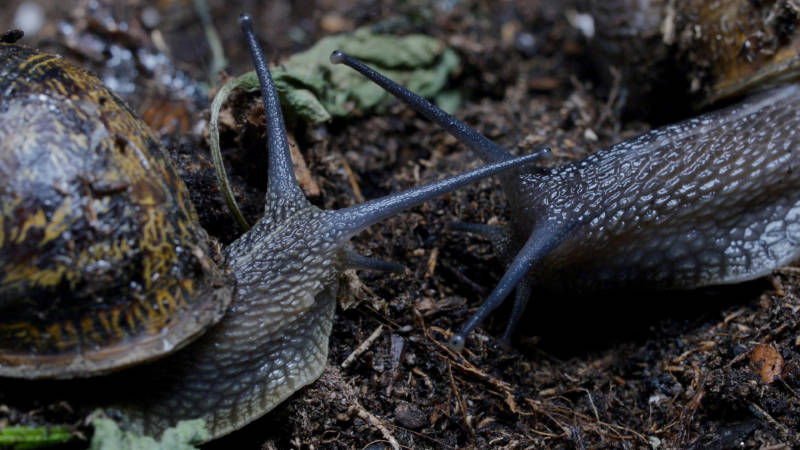
“The fundamental problem for snails, who are both male and female at the same time, is how you optimize both your male function and your female function,” said Barry Roth, a former collections manager at the California Academy of Sciences who’s now an independent snail and slug consultant in San Francisco.
In nature, fatherhood is easier. It’s the quickest, cheapest way to pass on your genes. Motherhood requires a much greater investment of time, energy, and resources.
“Courtship is how they sort that out,” Roth said. “Who’s going to be male? Who’s going to be female? Or is it going to be shared?”
With garden snails, “courtship” is somewhat euphemistic. Their idea of foreplay is to stab each other with a tiny spike called a love dart.
Here’s the play-by-play. Snails find mates using taste and smell. By waving their upper tentacles in the air—smelling—and tapping their lower ones on the ground—tasting—they pick up on the gooey trails of potential partners.
Then they follow the slime.
(For a detailed look at the many uses of slime, checkout this episode of Deep Look, Banana Slugs: Secret of the Slime.)
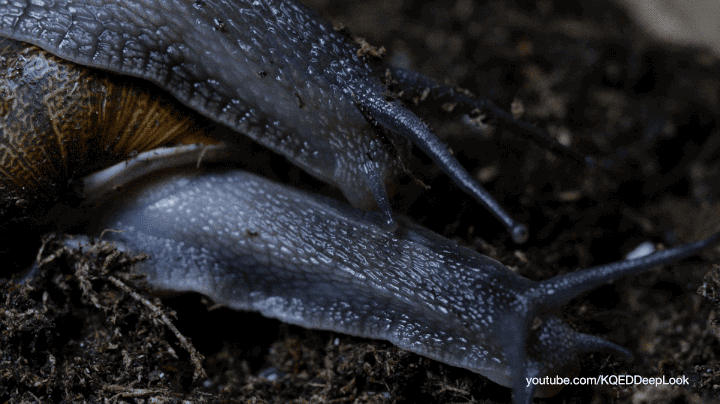
When snails meet, the tasting and smelling continue, this time with full-body contact, sometimes for hours. Call it heavy petting or extreme vetting, snails take the time to get to know their partners.
Everything in this courtship is wine and roses at first—then comes the love dart.
Technically called a gypsobelum, the love dart is a nail-clipping-sized needle that stays hidden in an internal sac until about half an hour before copulation begins, when the sac inverts and it’s fired, or stabbed, indiscriminately into the partner’s body.
“Being stabbed by the male dart makes you more of a female-oriented partner in that courtship,” said Roth.
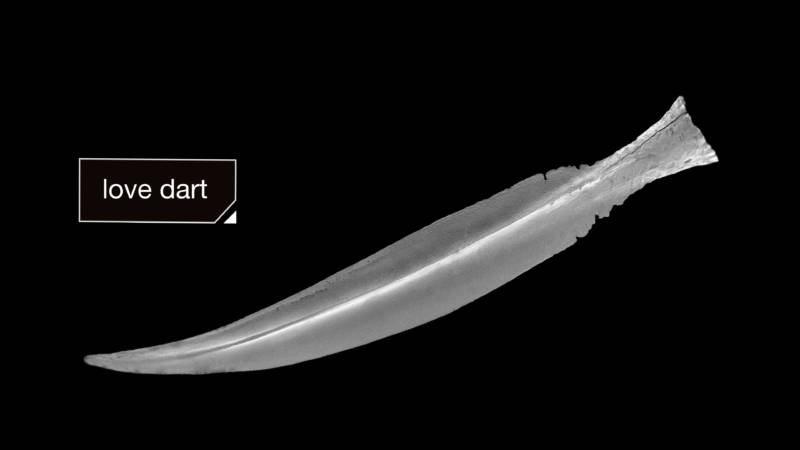
The love dart is the snails’ tool for maximizing their male side. It injects hormones to prevent the other snail’s body from killing newly introduced sperm once copulation begins.
When snails copulate, two penises enter two vaginal tracts. Both snails in a pairing transfer sperm, but whichever snail got in the best shot with the dart has a better chance of ultimately fertilizing eggs.
In some species, only one snail fires a love dart, but in others, like the garden snail, both do.
“The whole reproductive system is a quite a maze,” said Joris Koene, a gastropod researcher at Vrije Universiteit in Amsterdam.
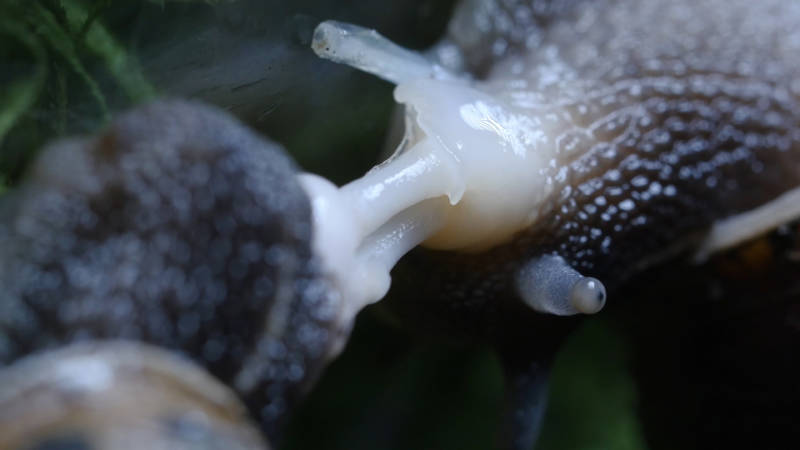
You can spot love darts sticking out of snails in mid-courtship, and even find them abandoned in slime puddles where mating has been happening.
Scale it up to human size and the love dart would be the equivalent of a 15-inch knife, according to Koene. Nonetheless, he’s only seen one snail die by dart.
“It does make a pretty decent-sized hole in the body,” he said, “but in general, they are fine. They’re used to this, I guess.”
